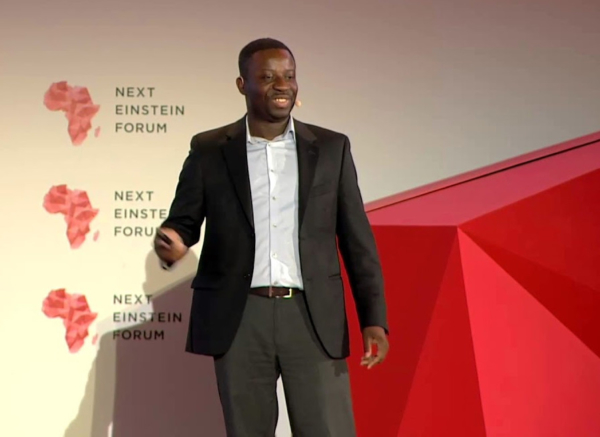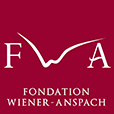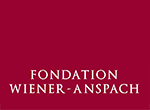 Jonathan Mboyo Esole was born in the Congo and he studied at the ULB and Cambridge. He is now Assistant Professor in the Department of Mathematics at Northeastern University. In March 2018 he received the Next Einstein Award, recognising Africa’s best young scientists and technologists. Alongside his academic activity, he works to support the education of girls in Africa. He received a Wiener-Anspach postgraduate fellowship to study mathematics at the University of Cambridge in 2001-2002.
Jonathan Mboyo Esole was born in the Congo and he studied at the ULB and Cambridge. He is now Assistant Professor in the Department of Mathematics at Northeastern University. In March 2018 he received the Next Einstein Award, recognising Africa’s best young scientists and technologists. Alongside his academic activity, he works to support the education of girls in Africa. He received a Wiener-Anspach postgraduate fellowship to study mathematics at the University of Cambridge in 2001-2002.
You spent part of your childhood in Brussels – what are your memories of your life at the time?
I was born in Kinshasa, in the Democratic Republic of the Congo (DRC), at the time still called Zaïre. When I was three years old, my family moved to Brussels as my father, Professor Esole Eka Likote, was doing his PhD in sociology and anthropology at the ULB. We were living a few blocks away from the Luxembourg Station. I remember playing in the Parc royal, going for long walks with my father in the Forêt de Soignes. When I was still in Kinshasa, I had a near-death experience which left me with medical problems that I had to deal with as a child in Belgium. I was a little bit slow, had problems talking correctly, and with my body coordination. My hero was my elder brother, Yuna, who is now a doctor in Brussels. He could do all these things I could not do so well: run, fight, drive a bicycle. I also remember falling in love with geometry as a child.
What brought you back here after high school? Your father had also attended the ULB – did you feel at home studying here?
I went back to the Congo in my fourth year of primary school. At the end of high school, we take a national state exam, very much like the baccalaureate exams in France. I finished second in the country and was applying to universities abroad including the ULB. However, in September, I was still in the Congo waiting for a visa. What made my arrival at ULB possible was my encounter with Professor Pierre de Maret, who was visiting the Congo that year. Pierre de Maret was one of my father’s mentors at ULB. He was also head of the Faculty of Philosophy and Rector of the ULB. He asked a Belgian professor of engineering to test my skills in mathematics. They were impressed by the results, and he did all he could to make sure I could finally arrive in Brussels. I would have never attended ULB if it was not for him. Yes, I felt at home at ULB because Pierre was very much a father to me and I had family in the city and friends that I kept in touch with from my childhood. I love ULB also for its spirit, students care about what happens in society and in the world. I can trace my moral compass all the way to the values given by my parents and to the spirit of the ULB.
In 2001-2002 you spent a year in Cambridge as a Wiener- Anspach postgraduate fellow. What can you tell us about the presence of African students, or more broadly speaking of black students, at the ULB and at Cambridge University?
In view of the history of Belgium, you do have many students from Africa at the ULB. I was myself involved with the Circle of Congolese Students. I remember holding a math support group that would serve the African community on campus. We would have students from Rwanda, Burundi, Togo, etc. It was beautiful to see students who were sometimes from countries at war getting together to solve homework and prepare their final exams. In Cambridge, the black community was completely different. You had people coming from the Caribbean, the Commonwealth countries such as Nigeria, Kenya, Uganda, Ghana, etc. It was the first time I met this part of the African diaspora.
What impact did that year in Cambridge have on the course of your professional life?
The effect was tremendous. It gave me the tools to see the world as a village and explore all the opportunities that come with being an Alumnus of one of the most prestigious universities in the world. My supervisor for my PhD, Ana Achúcarro, did her PhD in Cambridge. I did my postdoctoral research in the Department of Physics at Harvard University and then joined the Math Department where I was a junior faculty (Benjamin Pierce Fellow) for three years before getting a tenure-track position in Boston at Northeastern University. When I was at Harvard, I was solicited by several houses (Harvard version of Cambridge Colleges) to join their senior tables given my experience of living in a College in Cambridge.
You often compare mathematics to art, and you have recently described string theory as the most beautiful art in science.
Mathematics is really art because it is about systematically studying structures and relations and using notions of simplicity, minimality, and symmetries. When you think of why a mathematical theory is beautiful, you find yourself talking as if you were describing a painting or a beautiful cathedral. Mathematics as a whole is really like a cathedral whose stones have a life of their own. They rearrange themselves over time as new concepts reveal that some of the stones are more fundamental than others, and new stones are included to strengthen the overall structure and support different parts of the building in a more harmonious way. Paul Dirac, who is a founder of quantum mechanics and one of the most famous Cambridge Professors, was telling how his inspiration was guided by the beauty he saw in his equations. Many mathematicians and physicists can relate to that experience.
What are, today, the main challenges for researchers working in your field?
I work at the interface of mathematics (algebraic geometry) and physics (string theory). The questions we address are very fundamental and have a tendency to relate to questions asked differently by other communities of mathematicians and physicists. One of the challenges is to be able to communicate across different subfields. Funding and how funding is distributed is also a considerable challenge since some systems promote too much short-term visions. We also need to keep attracting young people and become more diverse as a field. Both mathematics and physics are very much male-dominated, and you do not see much people from Africa for example. I am one of the few in my field who had a female supervisor, and I am lucky to work with very talented graduate students from Harvard University such as Monica Jinwoo Kang and Sabrina Pasterski. I feel a strong responsibility to make my field more gender friendly and more diverse in general.
In March 2018 the second edition of the Next Einstein Forum, held in Kigali, brought together several talented young African scientists. One of the aims of the NEF is to create a network of African scientists, who too often feel isolated. Can you tell us a little more about this network?
What is fascinating about the NEF is that its fellows are not only some of the best from Africa but some of the best in the world. The structure is bringing excellence in research in Africa in a way that was never done before. The Cambridge community is very invested in this effort. The founder of the African Institute of Mathematical Studies (AIMS) is Niel Turok, who was a professor of cosmology in Cambridge and for a time was the chair of the Physics Department in Cambridge. In Kigali, it was a pleasure to meet Fernando Quevedo, who was my academic advisor at Clare Hall College in Cambridge and is now the director of the Abdus Salam International Centre for Theoretical Physics in Italy. The Next Einstein Forum is also organizing master’s degrees across Africa and AIMS has now four centers on the continent. Recently, NEF has also started a new scientific publication (Scientific African) in collaboration with Elsevier. The community of African scientists is increasing and working in partnership with initiatives from the African Diaspora. There is clearly something going on, and it is exciting, and the fruits are already visible today.
More and more African scientists who have studied and are working abroad feel the urge to contribute to the scientific and technological development of their countries of origin. You are collaborating with the NGO Malaika, whose aim is to “empower Congolese girls and their communities through education and health programs.” What is your role?
I started working with Malaika in December 2017. I was approached by its founder, Noella Coursaris, who is also an Ambassador for the Global Fund to fight AIDS, Tuberculosis and Malaria, on top of her modeling career and her intense humanitarian activities. In Malaika, I help with the STEM (Science-Technology Engineering-Mathematics) curriculum. I also teach a course on mathematics through Skype, and I am a member of the advisory board. The Malaika team is composed of a small group of very talented people from different industries and walk of life, spread across the world (including many in the UK and in Belgium). We volunteer and work together to empower these girls and their communities. Our strength is our local team in the Congo: they work with a dedication and a sense of purpose that is a massive force of motivation for all of us. The school is built in Kalebuka, in an impoverished area of Lubumbashi. We brought clean water to the area and built the Kalebuka Football for Hope Center in collaboration with FIFA. This community center uses health, education, and football programs as social development tools to improve the quality of life of 5,000 people in the region. Some of my students at Malaika are naturally very gifted in mathematics. It will be a dream come true to see some of them excel in sciences at the highest level. I do hope to see them going to study internationally in some of the best schools. We are working on it, and we need partners. Given all the talent we have in the Wiener-Anspach community, I welcome anyone who wants to know more or even get involved in what we are doing.
Your commitment goes beyond your involvement with Malaika.
One of the biggest challenges as a scientist from the Congo is the responsibility to speak out when human dignity is under attack. Since I graduated from high school, my country went through one of the worst wars of recent times followed by permanent insecurity and instability. That war and its aftermath have been characterized by the use of rape as a weapon of war. The body of our mothers and sisters became part of the battlefield. Dr Denis Mukwege, who is also a ULB alumnus, and globally known as the co-winner of the 2018 Noble Peace Prize, has been very vocal about this tragedy. My motivation to put women at the center of my scientific outreach activities in the Congo is also based on the history of abuse of women we have seen in our country. When you are a scientist from the Congo, on top of your research and academic work, you systematically have to decide if you will publicly talk about justice and human rights or if you won’t. There are good reasons to stay silent, and there are good reasons to speak out. It is a constant struggle, and it takes a lot of mental energy to balance what you want to do based on your values and the consequences it might bring to the structures you support on the ground, and sometimes even the safety of your family. Martin Luther King Jr said: “Our lives begin to end the day we become silent about things that matter.” I personally made a choice to speak out. All the things that make me who I am require me to speak out. Many good-minded people have advised me to focus just on my equations. As an African scientist, I cannot hide behind my equations. They are not thick enough to prevent me from seeing the suffering of my people. There is a line that is drawn on the ground. This is the line of human dignity. When it is crossed, even mathematicians will leave their square roots and will speak out. As we grow the number of scientists in Africa, we need to define our moral compass and values as a community of scholars. We have to determine our responsibility toward society.


